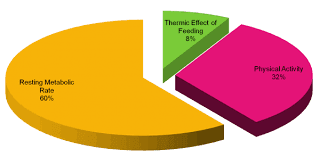
Programme-Related Nutrition
Quiz by Gemma Bailey-Dobson
Feel free to use or edit a copy
includes Teacher and Student dashboards
Measure skillsfrom any curriculum
Measure skills
from any curriculum
Tag the questions with any skills you have. Your dashboard will track each student's mastery of each skill.
With a free account, teachers can
- edit the questions
- save a copy for later
- start a class game
- automatically assign follow-up activities based on students’ scores
- assign as homework
- share a link with colleagues
- print as a bubble sheet
8 questions
Show answers
- Q1What does BMR stand for?Basic Metabolic RateBasal Metabolic RateBasal Mass RateBody Mass Ruler30s
- Q2What does RNI stand for?Recommended Nutrient Intake. Used in place of RNI when there is insufficient data available to set an RNI. A safe intake is likely to meet the needs of the majority of the population without causing any adverse effects of excess intake.Reference Nutrient Intake. This is the amount of a nutrient that is enough to ensure that the needs of nearly all a group (97.5%) are being met.Reference Nutrient Intake. This is the amount of nutrient that is enough for only a small number of people in a group who have low requirements (2.5%)i,e, the majority need more.Reference National Intake. This is the intake level for a nutrient at which the needs of 50 percent of the population will be met. Because the needs of the other half of the population will not be met by this amount.120s
- Q3What are macro-nutrients?Foods from the eatwell guide.A type of food (e.g. fat, vitamins, carbohydrate) required in large amounts in the diet.A type of food (e.g. fat, protein, carbohydrate) required in large amounts in the diet.A chemical element or substance required in trace amounts for the normal growth and development of living organisms.60s
- Q4What are micro-nutrients?A chemical element or substance required in trace amounts for the normal growth and development of living organisms. Vitamins and Minerals.Carbohydrates, Fats and Protein.All foods from the eatwell guide.A unit of energy of one thousand calories (equal to one large calorie).45s
- Q5What are the four components of energy output?Resting Metabolic Rate (RMR), Diet, Exercise and Drinking Water.Resting Metabolic Rate (RMR), Dietary Thermogenesis (DT), Physical Activity (PA) and Thermoregulation.Metabolic Rate (RMR), Thermogenesis (DT), Physical Activity (PA) and Adaptive Thermogenesis (AT)Resting Metabolic Rate (RMR), Dietary Thermogenesis (DT), Physical Activity (PA) and Adaptive Thermogenesis (AT)120s
- Q6What are the four main factors affect BMR?Age, gender, RNI and physical activity.Age, gender, kcals and physical activity.Age, gender, climate and physical activity.Dietary Thermogenesis (DT), Physical Activity (PA) and Adaptive Thermogenesis (AT)60s
- Q7What does energy balance mean?Energy output = energy inputGaining weightLosing weightEnergy input = energy output30s
- Q8What formula/ equation do we use to calculate BMR?Harris BenadictineHarry StylesRalf HarrisHarris Benedict30s
